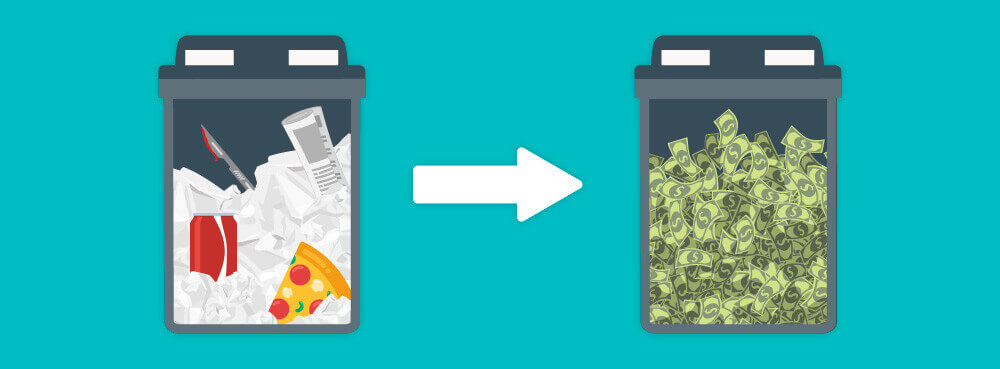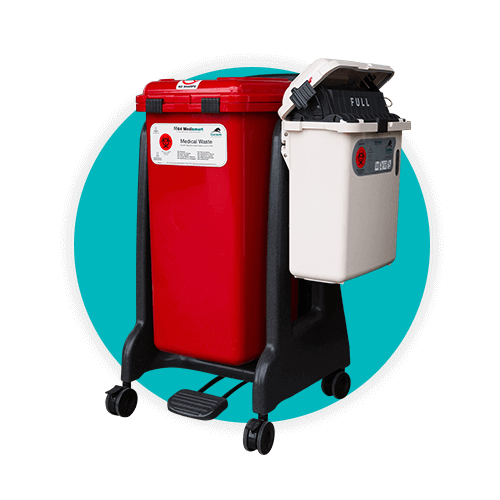How to Reduce Waste in Hospitals

Did you know that improper waste segregation directly correlates to an increase in the costs of healthcare waste management? Over classification, or incorrect waste segregation can increse overall volumes, weight, and costs. Luckily, Daniels Health specializes in healthcare waste containment systems that make segregating the different healthcare waste streams simple – saving you money and stress.
Why should you care?
Well, some healthcare waste disposal companies charge per pound for disposal while others charge per container. Regardless of how your partner charges, the bottom line is that the higher the volume of your waste, the more abundant it is and the higher the cost to you.
Daniels health wants to help you lose weight by reducing your waste volume. Our innovative solutions were designed with waste optimization in mind. Every day, our teams consult healthcare partners to review their current waste process to see where we can better consolidate streams and reduce unnecessary medical waste container turns.

Waste segregation efficiency is sort of like laundry.
When you enter your bedroom, which is more taxing:
A giant pile of laundry with everything from colorful, striped socks to that crisp, white dress shirt you recently bought OR no laundry, because it has all been properly sorted and in its respective place?
Much like different pieces of furniture make it efficient to store clothes, medical waste containers make it more efficient to dispose of different streams of healthcare waste in a way that does not negatively impact space.
The US market standard when it comes to healthcare waste is often and unfortunately “the bag and a box” method. That method is exactly as lackluster as it sounds: a cardboard box and a red biohazard bag. To continue the laundry analogy: consider having a number of cardboard boxes in your room. Imagine you store your laundry in the boxes without sorting it completely—doesn’t make a lot of sense does it? Taking the time to train your staff to properly segregate waste streams not only increases their safety and that of the environment, but it also lowers your overall cost because everything is going only in the medical waste container it belongs in.
Our solutions can reduce your hospital waste volumes — see the proof in these case studies:
485 Bed Illinois Hospital: Reduction of RMW Pounds by 59%
The Challenges
The first barrier with this hospital was that there were too many cooks in the kitchen when it came to the management of their healthcare waste program. Daniels Health takes pride in being a full solutions company for every healthcare waste stream—we want to allow room for growth as well as solutions. We were able to provide a plan that accommodated all of this facility’s waste streams, so they did not have to continue using two providers with different views on what is efficient.
The next challenge for this facility simply came down to current practices. Non-healthcare waste items were discarded into healthcare waste bins—like pizza boxes, soda cans, newspapers, etc. Having a container dedicated to a specific waste stream impacts the safety of a facility and cost of disposal. If unnecessary waste is added to that designated container, it will turn more often, raising cost needlessly.
The Final Hurdle : Dock Space
This hospital’s current vendor had to pick up healthcare waste five days a week to maintain a usable workspace. The frequency of transportation is one of the largest factors when determining the cost of healthcare waste disposal — more pickups tend to mean higher costs.
The Solution : Education & Optimization 
Daniels always tries to approach challenges from a need to educate. Once we learned more about the staff and their needs, we completed a waste audit — we need to know what we’re dealing with! This is when we found that a lot of unnecessary waste was being put into medical waste containers. Next, we worked with the staff to review their waste segregation process. From there, we introduced our reusable Regulated Medical Waste (RMW) container, the Medismart. The Medismart is easily identifiable as for only RMW waste and is a no-touch system. The reduction of touches during disposal lowered the risk of infection. The sustainable element of a reusable container system also eliminated the cost of a hospital having to purchase or pay a fee for cardboard boxes that added to landfill waste.
Click to learn more about the Medismart
Our impact on hospital waste segregation and costs
Along with regular waste audits, we were able to increase the efficiency of this hospital’s waste segregation program and provide opportunities for improvement on a quarterly basis. This hospital saw an overall reduction of RMW pounds by 59%. This number includes mainly our Medismart collectors, but also a few areas generating pathological waste that still used the traditional bag and a box. The highest monthly reduction yielded was 66%!
Imagine reducing up to 66% of your healthcare waste volume! Ready to get started?
Daniels has worked with hundreds of hospitals across the United States, implementing holistic waste management programs that are designed to reduce medical waste, decrease the hospital’s environmental footprint, and create a safer environment for clinical staff. Through waste audits, waste movement mapping, container right-sizing, and the implementation of education programs to upskill staff in correct waste segregation, we have seen a dramatic reduction in waste volumes and costs across entire hospital systems.
Speak to a Daniels team member today for a complimentary waste audit.
Let's Talk!
Your time is valuable, and we don’t want to play hard to get. You can either phone us directly on the details listed on our contact page, or feel free to fill out this short form and one of our team members will get back to you as quickly as possible.
